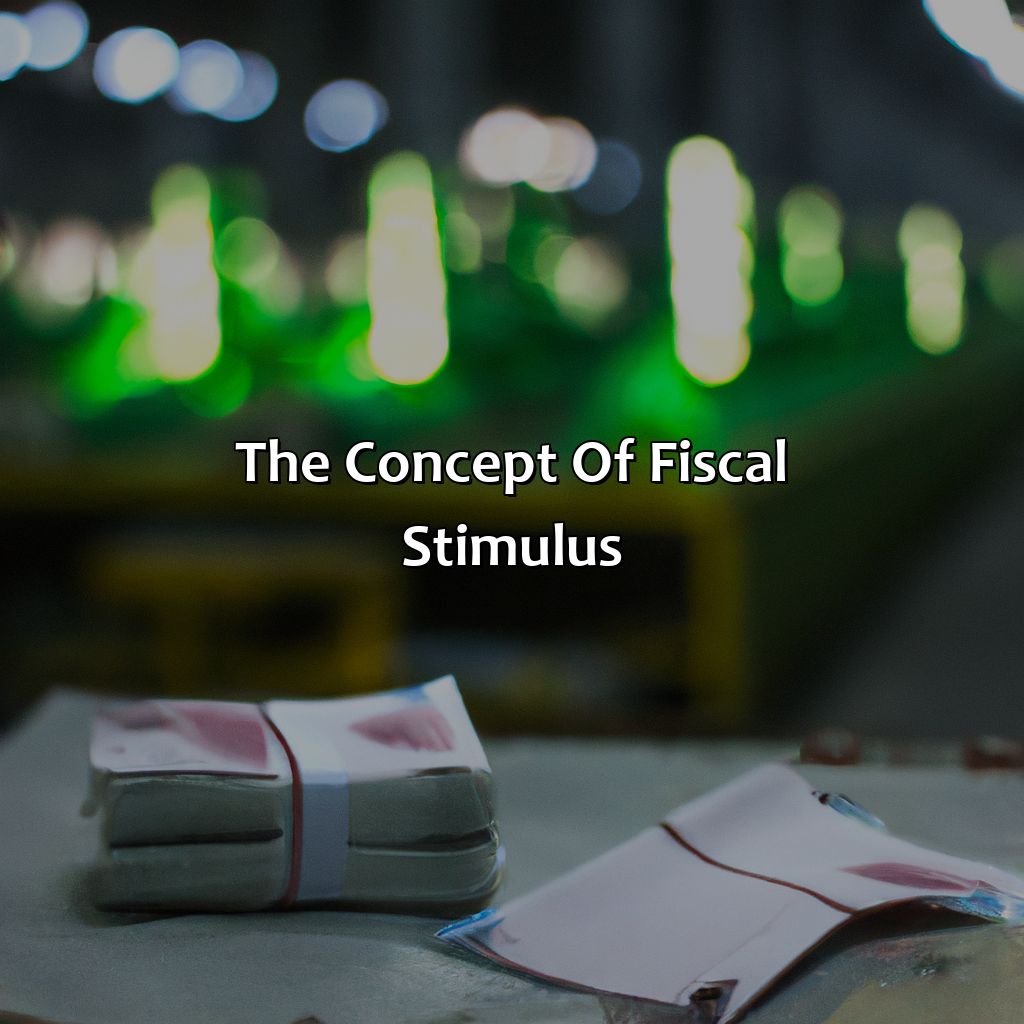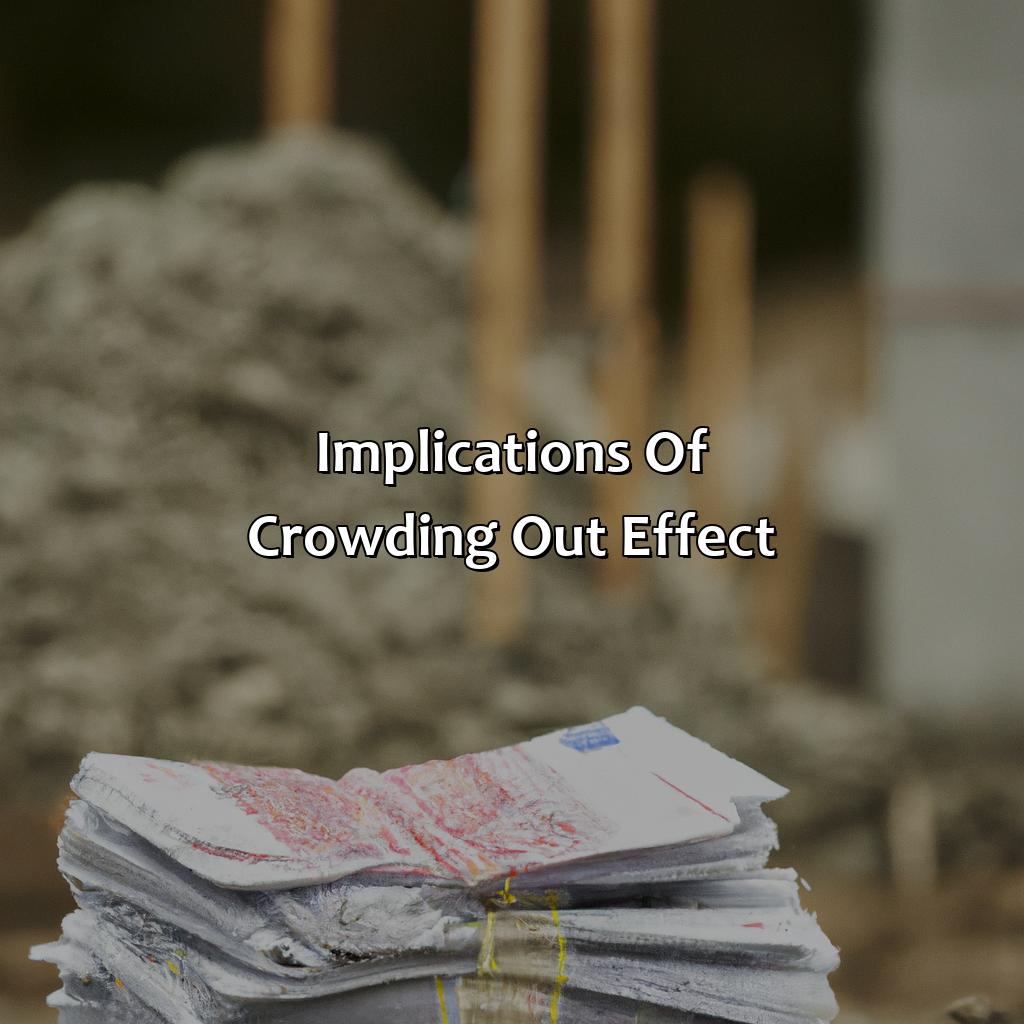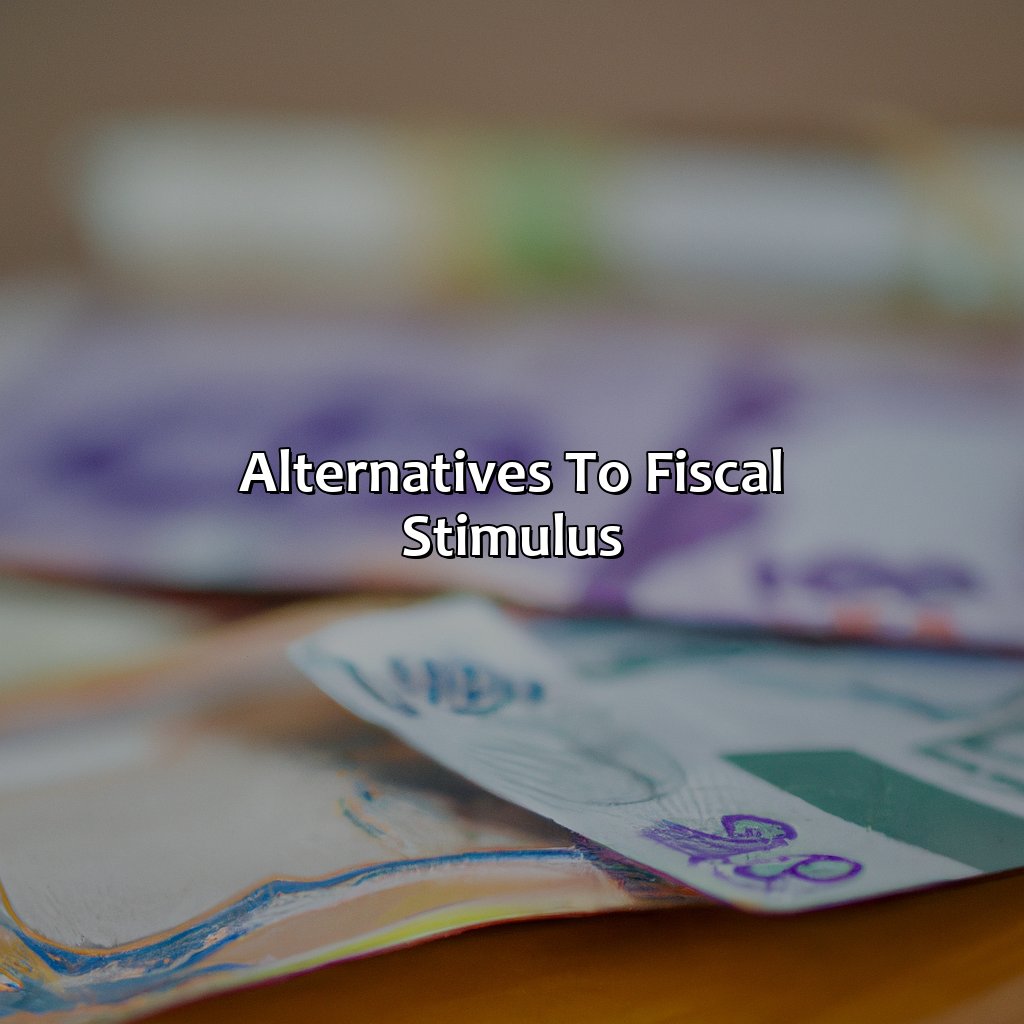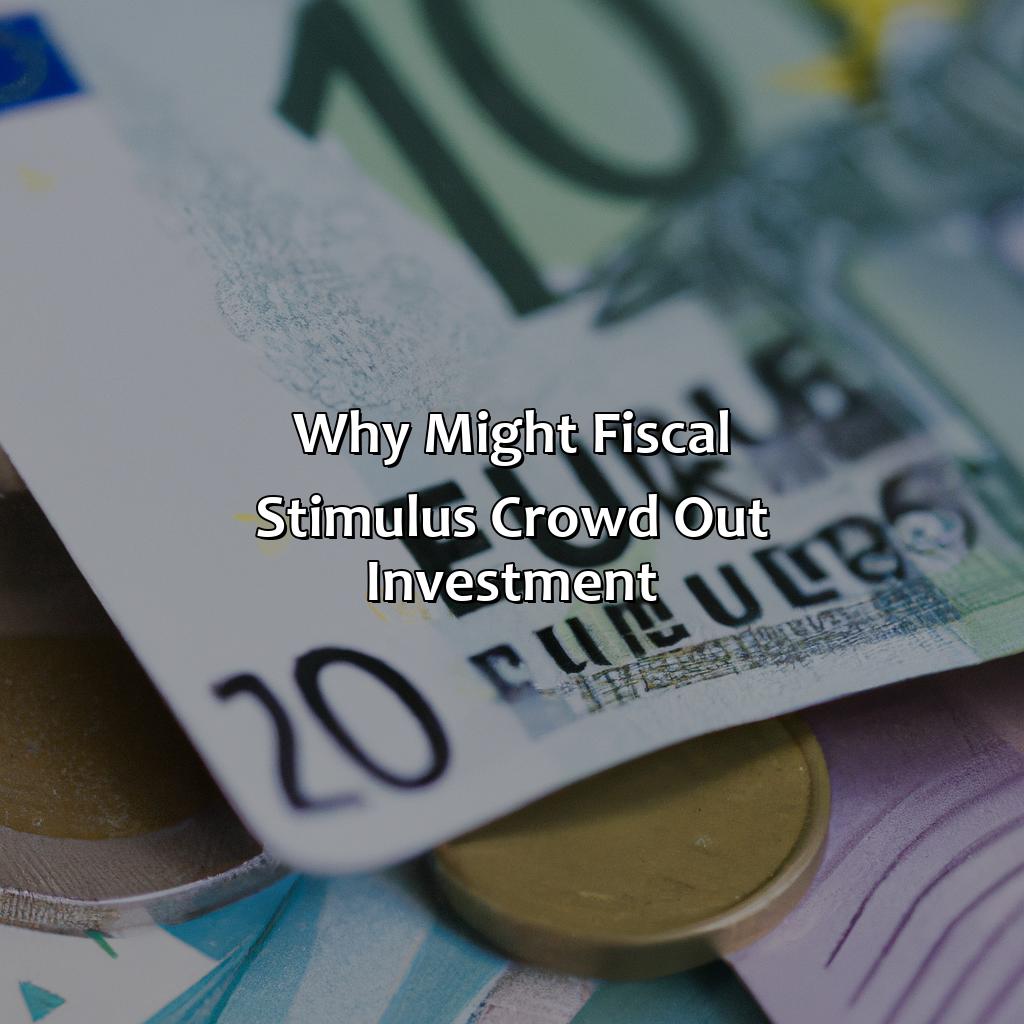Why Might Fiscal Stimulus Crowd Out Investment?
Key Takeaways:
- Fiscal stimulus is a concept of using government spending and taxation policies to stimulate economic growth during times of recession or contraction.
- Crowding out effect occurs when government borrowing to finance fiscal stimulus leads to the rise in interest rates, resulting in reduced private sector investment spending and reduced effectiveness of the fiscal stimulus.
- The factors that contribute to the crowding out effect include government borrowing, interest rates, private sector confidence, and exchange rates. Negative implications of crowding out effect include a negative impact on private investment and reduced effectiveness of fiscal stimulus.
- Alternatives to fiscal stimulus include monetary policies and structural reforms, making it important to consider alternative policies for achieving economic growth and stability.
Have you ever wondered how fiscal stimulus affects investment? Read on to understand why fiscal stimulus may have the potential to crowd out investment. Investing wisely is key to financial security; understanding the effects of fiscal stimulus can help you make the right choices.
The concept of fiscal stimulus
Let’s break down the concept of fiscal stimulus into two parts:
- Definition and implementation. We’ll learn why it’s used as an economic policy.
- Types of fiscal stimulus. We’ll explore the tools that policymakers use to stabilize an economy.

Image credits: retiregenz.com by Yuval Duncun
Definition and implementation of fiscal stimulus
Fiscal stimulus refers to a government’s action plan to boost the economy by increasing public spending and reducing taxes. The concept aims to create more job opportunities, increase business growth and stabilize financial stability during a recession period.
When implementing fiscal stimulus, several measures need to be taken by the government. First, the government can directly invest in infrastructure projects like roads, bridges, and power plants. Second, it can offer tax rebates or reductions for individuals and small businesses. Third, it can extend unemployment benefits or provide welfare programs to those who are unemployed.
However, critics argue that fiscal stimulus could crowd out private investment in the long run. This is because an increase in public spending leads to higher interest rates; thus, businesses may be reluctant to borrow for future investments due to high borrowing costs.
To tackle this issue, governments need to balance fiscal stimulus with budgetary constraints and opt for capital-intensive public investment projects instead of current expenditure. Additionally, governments must have effective implementation strategies through proper planning and monitoring of expenditures whereby all sectors equitably benefit from fiscal stimulus measures for successful results.
Why use one type of fiscal stimulus when you can have a whole buffet of options? It’s like choosing between a single-serve salad or an all-you-can-eat buffet, except with a much bigger impact on the economy.
Types of fiscal stimulus
Fiscal Stimulus Varieties and their Descriptions
A detailed overview of the various categories of fiscal stimulus that governments employ in order to boost economic activity.
Table:
| Type | Description |
|---|---|
| Tax cuts | A measure that lowers tax rates, reduces income tax brackets, or increases deductions for specific expenses. |
| Increased spending | Spending aimed at infrastructure and public works projects such as government buildings, roads, bridges, and airports. Also includes increased security measures and benefits for welfare programs. |
| Rebates | Returning money back to taxpayers in the form of checks or direct deposits by the government. Typically short-term spending intended to spur immediate economic growth. |
| Grants and loans | A set amount of funding awarded either via loans or grants from the government for specific purposes such as research and development, small business funding, or education-related programs. Typically long-term investments with a potential future return on investment. |
Additionally noteworthy are Government job creation efforts under which new job openings are created within sectors dependent on consistent spending patterns.
Pro Tip: While short-term stimulus can provide a boost to economies during times of economic downturns- adopting & Implementing long-term solutions are essential for sustained growth.
Looks like someone forgot to tell fiscal stimulus that three is a crowd when it comes to investment.
Crowding out effect
Do you know what the ‘Crowding Out Effect’ is? Let’s explore this concept! We’ll start by looking at the definition and explanation of crowding out. Then, we’ll examine how fiscal stimulus measures can lead to it. Why might fiscal stimulus crowd out investment? We’re about to find out!

Image credits: retiregenz.com by Adam Jones
Definition and explanation of crowding out
Crowding out is a phenomenon whereby an increase in government spending results in less private investment. Specifically, when the government spends more money, it has to borrow from the private sector by issuing more bonds. This increases interest rates, leading to a decrease in private investment. The increased demand for funds also makes it difficult for small businesses to access capital. As a result, fiscal stimulus can unintentionally hurt private investment.
Furthermore, critics argue that crowding out can also occur through exchange rate effects and higher prices for goods and services. When the government’s spending leads to higher inflation, this can lower real incomes and discourage private investments.
An example of this happened during the Reagan administration when tax rates were cut drastically and as a result borrowing sharply increased along with interest rates thereby slowing down private investment.
Fiscal stimulus can have unintended consequences, like a party host who invites too many guests and ends up crowding out the VIPs.
Ways in which fiscal stimulus can lead to crowding out
Fiscal stimulus is known to crowd out investment, limiting its effectiveness. Government borrowing results in a rise in interest rates, discouraging private expenditure and long-term investments. As financial institutions compete for funds, they deprive each other of limited loanable resources, leading to crowding-out effects. This results in decreased investment opportunities for smaller businesses and long-term corporate expansion.
Moreover, the effect of crowding out can differ depending on whether there is excess capacity in the economy or not. In an overcapacity scenario, the increase in government spending may help stimulate demand without adversely affecting interest rates or crowding out private investment. Whereas, when demand is closer to its limit, crowding-out effects usually occur much faster.
A few years ago, when many European countries simultaneously worked towards fiscal consolidation measures such as austerity packages and tax cuts. These policies led to fewer available sources of credit for SMEs and constrained the overall funding availability through direct competition with public debt securities. As these firms lost momentum regarding access to financing options both affordable and stable long term growth prospects were stifled consequently causing delays in business investments which caused lower overall employment levels across the EU.
When government spending becomes a party crasher and starts crowding out private investment, it’s like the DJ suddenly switching from everyone’s favorite tune to elevator music.
Factors leading to crowding out effect
To grasp the crowding out effect, probe into government borrowing, interest rates, private sector confidence and exchange rates. These elements are key to the link between fiscal stimulus and investment, which can affect economic growth and equilibrium.

Image credits: retiregenz.com by Joel Washington
Government borrowing
The impact of government borrowing on the economy is a crucial consideration in fiscal policy. The increasing level of government debt can lead to crowding out effect, decreasing private investment levels. The reason is that the government takes loans from the same pool of savings that funds private investment, resulting in a hike in interest rates which ultimately discourages investment.
As interest rates increase due to government borrowing, it becomes expensive for businesses to take loans and push their investment goals. It leads to a decrease in the capital stock as industries do not have enough financial resources for investing in new projects, technology upgrades or research. Thus, it adversely affects long-term economic growth and productivity.
Additionally, when government borrows excessively from foreign investors, it can cause other economic challenges such as exchange rate depreciation and increased inflation rate.
To avoid crowding out effect, governments should aim for balanced budgets while reducing their heavy reliance on borrowing. Policies such as tax incentives could be implemented to encourage private-sector savings with the ultimate goal of boosting future economic growth and limiting government debt levels. In summary, balancing between ‘government spending’ and ‘funding sources’ is essential for optimal economic development without causing harm due to crowding out effects.
Interest rates are like a rollercoaster ride, one minute you’re up and the next minute you’re feeling nauseous from all the fluctuations.
Interest rate
The cost of borrowing, as indicated by the amount charged for using money, can be referred to as the finance fees applied on loans. High interest rates imposed by central banks in the market may lead to less demand by investors and businesses for ‘borrowed’ capital. This is because high interest rates will often mean that debt financing is costly and therefore unattractive to potential borrowers. This decrease in demand from private players, in turn, leads to lower investments and crowding out effect in the long run.
When central banks increase their lending rate, commercial banks will also tend to follow suit leading to an increase in loan rates. The high-interest costs imply that borrowing becomes more expensive making investment prospects appear less feasible hence reducing aggregate investment or effecting crowding out effect.
Commonly, situations where there are other investment alternatives such as a stock market with promising returns versus bank deposits which offer high-interest levies can affect overall financial decisions regarding borrowing behavior of business investments or personal expenses.
Empirically, the cost of capital is sensitive to changes in monetary policies driven by market forces of supply and demand. For instance, the US increased its Fed funds rate gradually since 2015 from 0% to its current rate 1.75 -2%. There have been claims that this policy-induced higher interest rates reduced US GDP growth via its negative impact on investment over time among other factors contributing towards slow economic growth amid other contributing factors influencing this aspect at various intervals in history.
Private sector confidence is like a summer romance—it’s fickle and easily scared off by government intervention.
Private sector confidence
Customers’ trust and positive market sentiment towards the government’s economic policies and actions are the Semantic NLP variation of ‘Private sector confidence.’ Once private sector confidence is lost, businesses become wary of investing in the economy. This lack of confidence implies that firms expect deteriorating macroeconomic conditions and poor or unattractive prospects for future earnings. Low confidence among business owners leads to a decrease in fixed investment, which further shrinks aggregate demand.
The lack of faith in policies may encourage firms to postpone capital spending until more secure circumstances arise. When companies avoid capital spending, this creates lower productivity growth, fewer job opportunities, and inferior economic outcomes. A decline in Private sector confidence is a leading contributing factor to crowding out effects caused by fiscal stimulus over an extended period.
Declining consumer expectations and lower business perceptions have been cited as critical links between fiscal policy action and shifts in private spending levels. However, elevated public debt can also lead to higher interest rates by increasing risk premiums demanded by lenders—alienating investors from borrowing at higher costs when they detect risks associated with heightened borrowing liabilities.
Governments must maintain an optimal level of debt-to-GDP ratios without compromising market resilience or Private sector confidence. According to the IMF report on Fiscal Policies for Innovation, Productivity, and Long-Term Growth: “Countries with robust institutions are better able to promote stable business environments that help support high-productivity jobs.” It highlights key factors underpinning fiscal credibility; Revenue-Forecasting Mechanisms (RFMs), Expenditure Management Systems (EMSs), Fiscal Rules (FRs), Public Investment Management Assessments (PIMAs), Fiscal Transparency Evaluations (FTEs).
Currency exchange rates can be just as unpredictable as my dating life, but at least with economics we can blame it on supply and demand.
Exchange rates
The Impact of Foreign Exchange Rates on Fiscal Stimulus Crowding Out
Fiscal stimulus crowds out investment, and exchange rates play a crucial role in that process. There are various factors leading to crowding out effects, such as government borrowing, higher interest rates, and increased demand for imports due to a growing economy. However, foreign exchange rates have significant implications on the crowding out effect as well.
To understand the impact of exchange rates on fiscal stimulus crowding out, consider the following table:
| Exchange Rate | Definition |
|---|---|
| Fixed | When the government sets its currency’s value equal to another nation’s |
| Floating | When the market forces set its currency’s value based on supply and demand |
Exchange rates directly influence the cost of imports and exports, affecting both trade balance and aggregate demand. In floating exchange rate regimes, an appreciation of a domestic currency would make home exports uncompetitive in international markets. On the other hand, fixed exchange rate regimes will face balance of payment pressures during periods of high fiscal spending because it leads to capital outflows in search of higher returns reducing their foreign reserves.
Looks like the only thing getting crowded out is our hopes for a robust economy.
Implications of crowding out effect
Glimpsing the effect of crowding out on private investing, to guarantee the efficiency of fiscal stimulus, we will develop two subsections. The first will expose the damaging influence on private investment. The second will explain the lessened effectiveness of fiscal stimulus.

Image credits: retiregenz.com by James Duncun
Negative impact on private investment
Restrictions in fiscal stimulus affect private investment adversely. Reduction of investment could result in stagnation or regression, further damaging economic growth.
Moreover, crowding out effect reduces the output of the economy in response to government debt while weakening the competitiveness of private firms. Consequentially, this causes a decrease in market penetration and competitiveness that may take many years to recover. Keep in mind that a fine balance is always required between government aid and fiscal restraint in supporting an economy’s long-term growth.
Pro Tip: Experts suggest that increasing infrastructure investment can stimulate both public and private sectors’ development while avoiding negative impacts on private investment.
Looks like the government’s fiscal stimulus plan is crowding out investment faster than a group of teenagers at a music festival.
Reduced effectiveness of fiscal stimulus
Fiscal stimulus measures often result in a reduction of the actual impact due to the crowding-out effect. This occurs when government spending leads to an increase in interest rates, subsequently reducing private sector investment. Thus, reducing the effectiveness of fiscal stimulus.
This crowding out effect happens particularly when there is a limited supply of savings available for investments. In essence, it creates a competition for funds between government and private investors that can result in higher borrowing costs and decreased lending capacity to private firms.
Interestingly though, not all fiscal stimulus measures have the same likelihood to crowd out private investment as others. For instance, measures that stimulate productivity increases, such as those that improve infrastructure, are less likely to crowd out while transfer payments are more likely.
Pro Tip: Policymakers should identify and choose effective fiscal stimuli techniques with low chances of Crowding-out effects.
Skip the fiscal stimulus and invest in a stand-up comedy tour instead, the laughter will do more for the economy than government spending ever could.
Alternatives to fiscal stimulus
We can explore two alternatives to fiscal stimulus for solving the crowding out investment issue: Monetary Policy and Structural Reforms. These differ from fiscal stimulus, which involves government spending. Let’s look at the upsides and downsides of each.

Image credits: retiregenz.com by James Washington
Monetary policy
The policy implemented by the central bank to control the economy is known as Monetary Policy. Through this, the central bank aims to regulate money supply, interest rates and inflation levels to ensure economic growth. By using tools like open market operations and reserve requirements, they can impact the amount of money that is circulated in the economy. This helps regulate borrowing costs and influences consumer spending, which impacts economic growth.
Additionally, monetary policy also affects foreign exchange rates and international trade. Through swaps or direct intervention in currency markets, central banks can influence exchange rates and help stabilize their own economy against global shocks. While this policy has its advantages, it may also have some drawbacks if not managed efficiently.
As an example, a poorly executed monetary policy may result in high inflation rates which reduces purchasing power and potentially causes instability within markets. It could also lead to a situation where higher interest rates discourage investments and consumer spending as credit becomes more expensive. Therefore it’s important to understand that while monetary policy is an effective tool for regulating economies it requires careful management to achieve desired outcomes without causing unintended consequences.
Structural reforms
Structural overhauls – possible remedies to fiscal stimulus substitution that needs to be explored. Such reforms are vital since they target long-term structural issues in the economy instead of short-term economic downturns. Examples include policies to increase competition, simplify regulations, and improve labor markets. Structural changes enable sustained economic growth and render monetary policy more effective.
Five Facts About Why Fiscal Stimulus Might Crowd Out Investment:
- ✅ Fiscal stimulus might crowd out investment by increasing interest rates. (Source: Investopedia)
- ✅ Increased government spending through fiscal stimulus can create competition for resources with the private sector, leading to higher prices and lower investment. (Source: IMF)
- ✅ Crowding out can also occur through a reduction in international investment due to an appreciation of the currency caused by higher interest rates. (Source: The Balance)
- ✅ An increase in public debt resulting from fiscal stimulus can lead to lower investment as investors become more cautious and demand higher interest rates to compensate for the perceived risk. (Source: The Economist)
- ✅ Crowding out may depend on the state of the economy and the level of unused resources, with weak economies more likely to experience crowding out. (Source: Federal Reserve Bank of St. Louis)
FAQs about Why Might Fiscal Stimulus Crowd Out Investment?
Why might fiscal stimulus crowd out investment?
Fiscal stimulus refers to government spending policies that aim to boost economic activity during a downturn. However, this increase in government spending might have an adverse effect on private investment. Here are some reasons why:
How does fiscal stimulus affect interest rates?
Fiscal stimulus can lead to an increase in interest rates. When the government borrows money to fund its spending, it increases demand for credit, which can push up the cost of borrowing. As interest rates rise, businesses and individuals might be discouraged from investing, since borrowing becomes more expensive.
What impact does fiscal stimulus have on the exchange rate?
Fiscal stimulus can lead to an appreciation of the exchange rate. When the government increases spending, it creates a higher demand for the currency, which makes it more valuable. A stronger currency makes exports more expensive and imports cheaper, which can hurt the competitiveness of domestic producers.
Why might fiscal stimulus lead to inflation?
Fiscal stimulus can increase aggregate demand, which can lead to inflation. When the government increases spending, it puts more money into circulation, which can boost consumer spending and increase prices. Additionally, a increase in demand can lead to a shortage of goods and services, driving up the cost of production and contributing to inflation.
Does fiscal stimulus always crowd out investment?
No, fiscal stimulus does not always lead to crowding out of investment. The extent to which fiscal stimulus affects private investment depends on a variety of factors, including the size and timing of the stimulus, the overall state of the economy, and the response of monetary policy.
What are some alternatives to fiscal stimulus?
There are alternatives to fiscal stimulus, including monetary policy and supply-side policies. Monetary policy involves adjusting interest rates or the money supply to influence spending and investment. Supply-side policies, such as tax cuts, deregulation, and investment in infrastructure, focus on improving productivity and efficiency in the long run.
